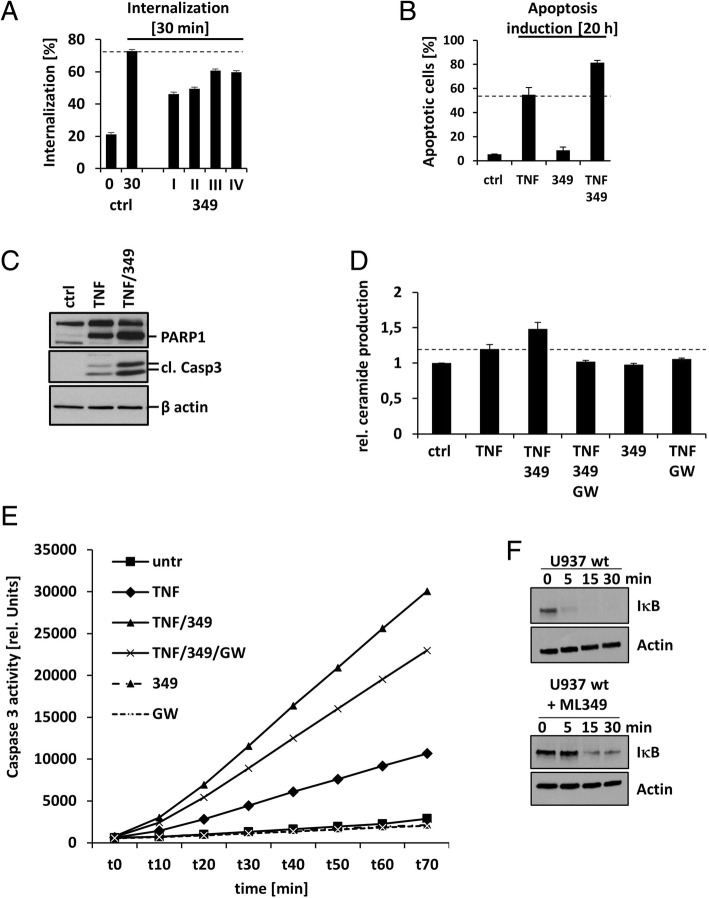Fig. 4.
The biological function of pharmacological APT2 inhibition in TNF signaling. The dashed black lines indicate wt apoptosis and internalization levels upon stimulation with TNF. Abbreviation: ML349 (349). All experiments show mean values (+/− SD) of 3–5 independent experiments. a TNF-R1 internalization in response to activation by TNF. Ctrl: TNF-R1 internalization increases upon 30 min incubation at 37 °C in the presence of TNF. Incubation with ML349 (I: 50 μM, II: 25 μM, III: 12.5 μM, IV: 6.35 μM) reduced internalization. b Apoptosis induction analyzed by quantification of nuclear DNA fragmentation. 20 h TNF treatment increased apoptotic cells. Incubation with ML349 (25 μM) increased apoptosis rate. Higher concentrations of ML349 resulted in excess apoptosis without TNF. c Apoptosis induction analyzed by WB. Panel one: PARP1 cleavage. Panel two: active caspase-3. Panel three: actin as loading control. d Ceramide production after 10 min stimulation with TNF. TNF induces ceramide formation, which is increased upon APT2 inhibition by ML349. nSMase inhibition by GW4869 (10 μM) protects from ceramide production. e Caspase-3 activity was monitored up to 70 min upon addition of 100 ng/ml TNF, 25 μM ML349, 2 μM GW4869. One representative experiment of three measurements in duplicates is shown. f Degradation of IκB was analyzed upon stimulation with TNF by WB. Actin serves loading control. One representative experiment is shown

